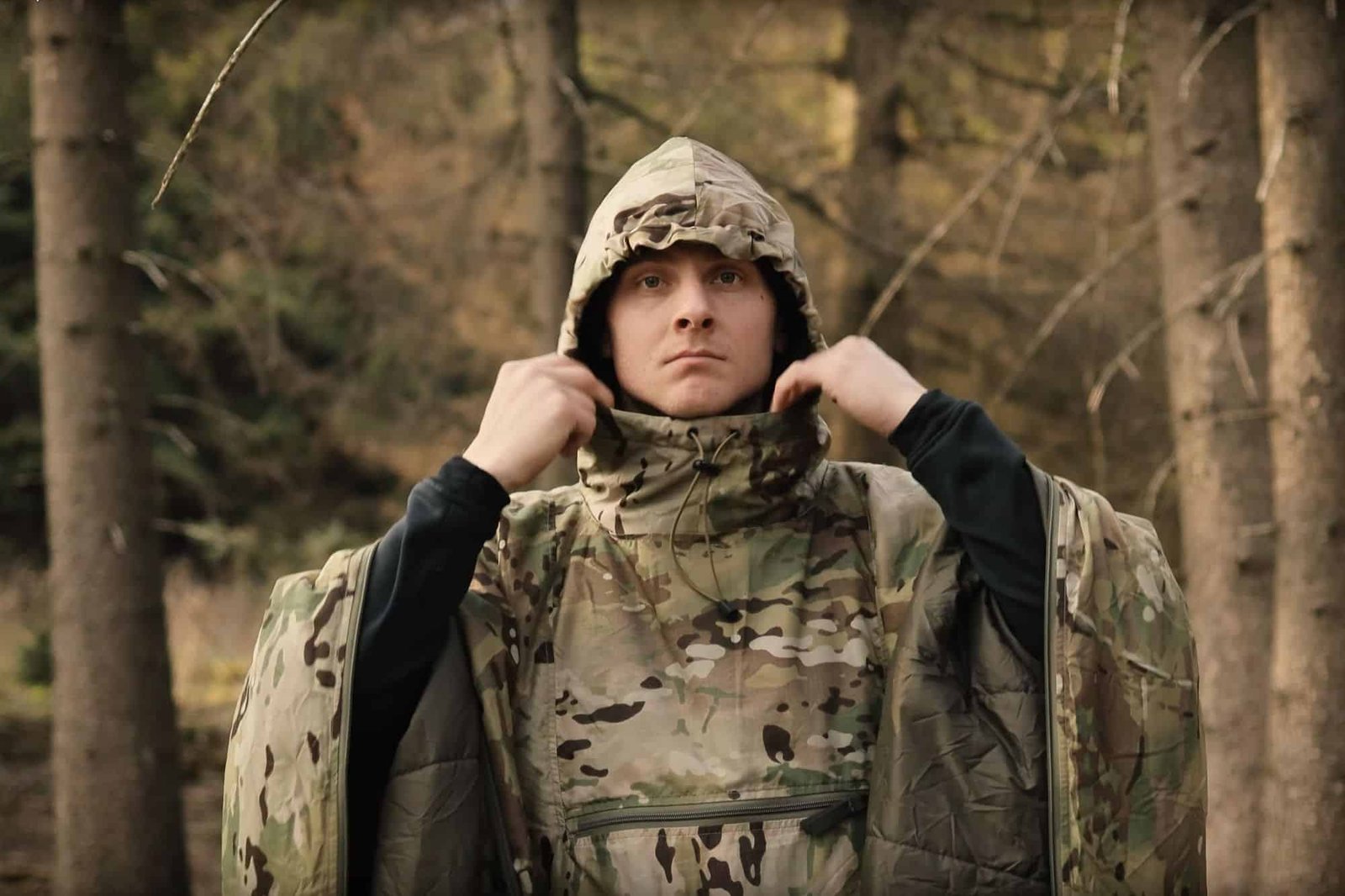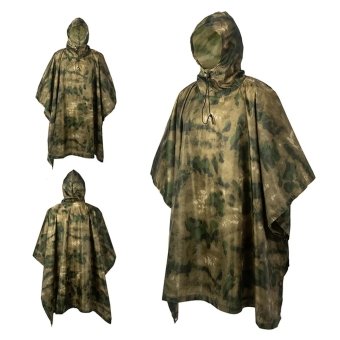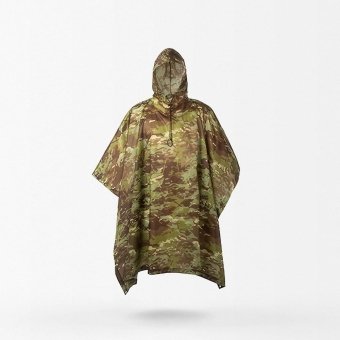Ponchos might seem like simple rain gear, but in the military, they’re much more than that. These versatile tools have been a staple for soldiers for decades, offering protection from the elements and serving multiple purposes in the field. So, does the U.S. Army still use ponchos? Absolutely! While their design has evolved, ponchos remain an essential part of military gear, valued for their durability and adaptability. In this article, we’ll dive into their history, practical uses, and why they continue to be a favorite for soldiers and outdoor enthusiasts alike.
Does the U.S. Army Still Issue Ponchos?


Yes, the U.S. Army still issues ponchos to soldiers, though their usage has evolved over time. Military ponchos are valued for their multipurpose functionality, offering protection from rain, wind, and even serving as emergency shelters. The standard-issue poncho has been a part of the soldier’s gear for decades, thanks to its lightweight and durable design. While other advanced materials and specialized rain gear exist, the poncho remains a trusted item in the military inventory.
What Are The Key Features of Military Ponchos?
Here’re some key features of the military pocnhos as below;
- Durable Material: Military ponchos are typically made from rip-resistant nylon or polyester, often with a waterproof coating. This ensures they can withstand harsh conditions without tearing.
- Lightweight and Compact: Designed for portability, military ponchos are lightweight and can be folded into a small package, making them easy to carry in a backpack or attach to gear.
- Universal Fit: The one-size-fits-all design, with adjustable features like drawstrings and snaps, ensures a comfortable fit for soldiers of various sizes and allows for easy layering over gear.
- Grommets and Ties: Built-in grommets along the edges and tie-down loops make the poncho versatile for creating shelters or securing it to other items.
- Hood with Drawstring: A built-in hood with an adjustable drawstring provides complete coverage, keeping both the head and neck dry in heavy rain.
What are Ponchos Made Of?
Ponchos are crafted from a variety of materials, depending on their intended use, durability requirements, and weather resistance. Military ponchos, in particular, are designed to withstand harsh environments and provide reliable protection. Here’s a breakdown of the materials commonly used to make ponchos:
- Ripstop Nylon: This is a lightweight and durable material that’s a favorite for military ponchos. Its unique grid-like weave helps prevent tears from spreading, making it tough enough for rugged outdoor use.
- Polyester: Polyester is another popular material, known for being lightweight and easy to care for. It’s often used in ponchos because it holds up well in wet conditions and is less likely to absorb water.
- PVC (Polyvinyl Chloride): PVC is commonly found in cheaper, disposable ponchos. It’s a flexible plastic material that’s completely waterproof, making it perfect for short-term use during a sudden rainstorm.
- Canvas: While not as common today, canvas ponchos have a classic appeal and are still used by outdoor enthusiasts. When treated for water resistance, canvas can provide excellent protection and durability.
- Wool: Traditional ponchos, especially those from South America, are often made of wool. Wool offers warmth and can repel light rain naturally, making it a great choice for cooler climates.
Does the U.S. Army Use Ponchos or Raincoats?
Yes, the U.S. Army utilizes both ponchos and raincoats, but they serve different purposes. Ponchos are favored for their versatility—they can cover not only the soldier but also their gear, like backpacks or weapons, keeping everything dry in a downpour.
Raincoats, on the other hand, provide a more fitted option for wet conditions but lack the adaptability of ponchos. In field operations, the poncho often wins due to its ability to transform into a groundsheet, tent, or improvised stretcher.
How Big Is Military Surplus Poncho?

Military surplus ponchos are specifically designed with generous dimensions to ensure maximum coverage and versatility in the field. The full military-grade size is typically 62 inches by 82 inches (approximately 5 feet by 6.8 feet). This makes them large enough to serve multiple purposes while remaining manageable to carry and use.
Why Are Military Ponchos So Large?
The dimensions of military ponchos are intentional, offering a balance between coverage and practicality. Here’s why their size matters:
- Full-Body and Gear Coverage: The 62-inch width and 82-inch length are designed to protect not just the soldier but also their gear, including backpacks, weapons, and other equipment, from rain and wind.
- Multi-Use Design: The large size allows the poncho to be used for a variety of purposes. It can be transformed into an emergency shelter, a groundsheet, or even a stretcher when needed.
- Layering Options: Military ponchos are often paired with liners for added insulation. Their size ensures there’s enough room for layering without compromising comfort or functionality.
- Freedom of Movement: The generous dimensions allow for ease of movement, even when carrying bulky gear or performing tasks in the field.
How to Wear a Military Poncho?

Wearing a military poncho is straightforward but requires a bit of technique for maximum effectiveness. Here’s how to do it:
- Unfold and Identify the Hood: Spread the poncho out and locate the hood, which will help orient it properly.
- Pull Over Your Head: Slip the poncho over your head so that the hood covers you securely.
- Adjust for Gear: Ensure the poncho covers your backpack or other gear, keeping everything protected from the rain.
- Secure the Sides: Some ponchos come with side snaps or ties. Fasten these to prevent the poncho from flapping in the wind.
- Stay Mobile: Ensure the length doesn’t interfere with movement, especially if you’re hiking or running.
Is a Poncho Better than a Raincoat?
Whether a poncho or raincoat is better depends on the situation. Ponchos excel in versatility—they’re not just rain protection but also multi-use survival tools. Raincoats, however, are better suited for situations where mobility and fitted coverage are priorities, as they offer less drag and better insulation.
In military contexts, the poncho often edges out raincoats because it can double as a shelter or even a stretcher in emergencies. For everyday use, though, raincoats might be more practical for their tailored fit and ease of wear.
How to Install a Military Poncho Liner?
A military poncho liner, often referred to as a “woobie,” is a versatile piece of gear that pairs with a poncho to provide warmth and comfort in various conditions. Installing the liner is straightforward and ensures you get the most out of this combination. Here’s how to do it:
- Spread Out the Poncho :Lay the poncho flat on a clean surface with the inner side facing up. This will ensure that the liner sits snugly against the inside of the poncho when worn or used as a shelter.
- Align the Liner with the Poncho: Place the liner on top of the poncho. Make sure the corners and edges of the liner match up with the poncho’s attachment points. The liner should cover most of the poncho without bunching or overhanging.
- Locate the Ties and Grommets: Military poncho liners come with strings or ties sewn into their edges, while the poncho has metal grommets or loops. These are the points you’ll use to secure the two together.
- Attach the Corners: Start by tying the liner’s corner ties to the poncho’s corner grommets. Use a simple knot that holds securely but can be untied easily if needed. This ensures the liner stays in place while you’re moving or using the poncho as a shelter.
- Secure the Sides: Continue attaching the liner by tying the strings along its sides to the corresponding grommets on the poncho. This creates a snug fit and prevents the liner from shifting around during use.
- Check the Fit: Once all the ties are secured, check to make sure the liner is evenly attached and not sagging or loose. Adjust the knots if necessary to ensure the liner fits tightly against the poncho.
Wrap Up

More intels about our Military Ponchos
Stay battle-ready with our Military Ponchos—durable, weatherproof, and essential for any mission. Gear up now!
If you’re looking for military-grade ponchos or other tactical gear, Kula Tactical has you covered. With a wide range of high-quality products, including ponchos, liners, and survival essentials, we’re here to equip you for your next adventure. Explore our collection today and experience the reliability of battle-tested gear!









